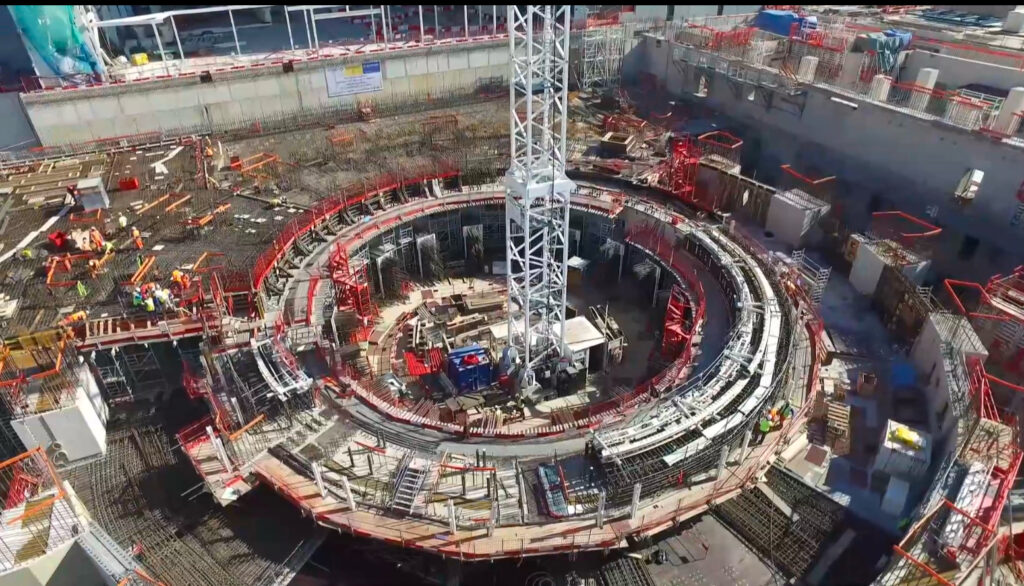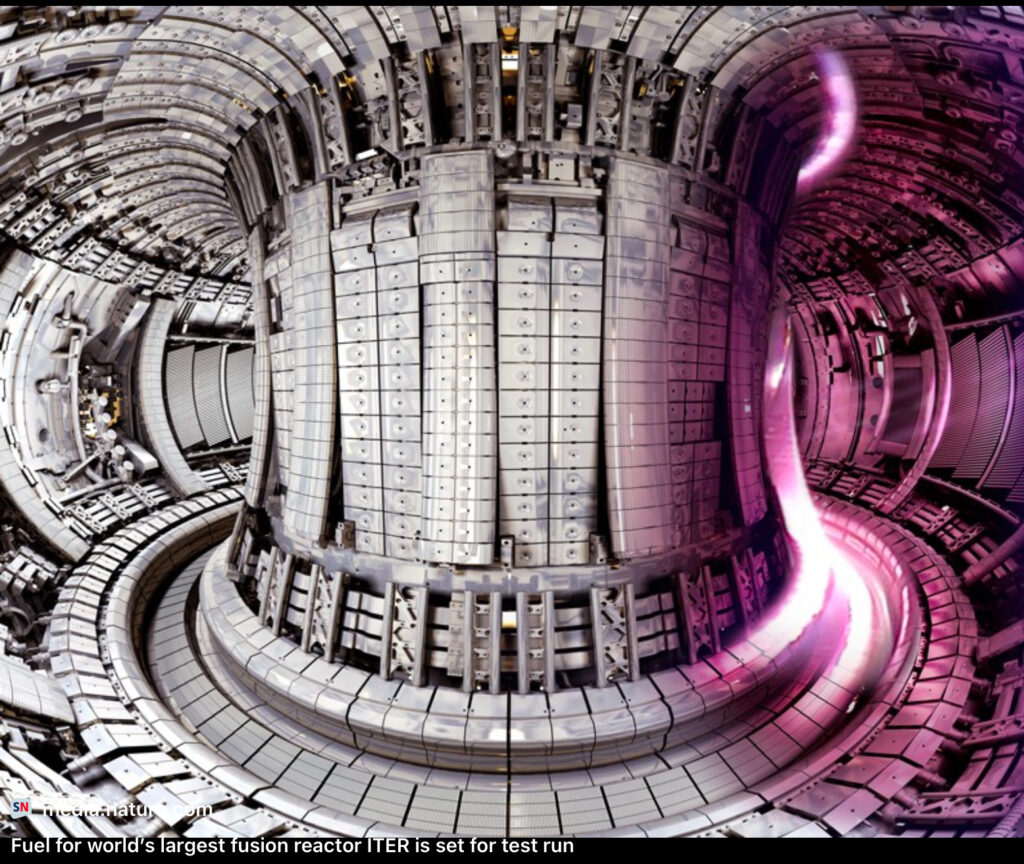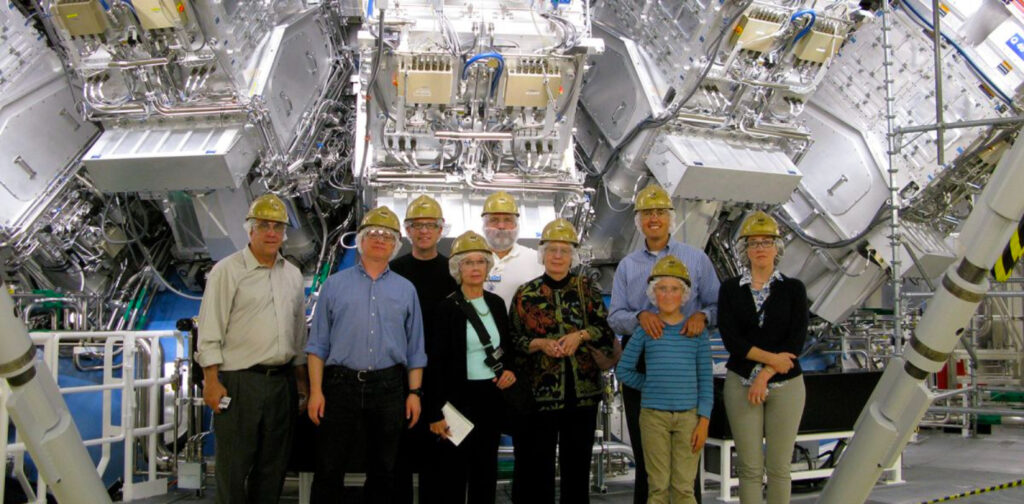Fusion Energy: Paving the Way for a Clean and Unlimited Power Future
By [Mian Ishaq] > Thu Jan 16
Introduction
In the relentless pursuit of clean and sustainable energy, scientists have long looked towards the stars—literally. Fusion energy, the process that powers the Sun, has been heralded as the holy grail of energy production. The allure lies in its potential to provide virtually limitless energy with minimal environmental impact. In 2022, the landscape of fusion research underwent a seismic shift when an experiment at Lawrence Livermore National Laboratory (LLNL) achieved what many dubbed the “experiment of the century.” This landmark achievement demonstrated ignition: a fusion reaction generating more energy output than the energy input. This breakthrough not only reinvigorated the scientific community but also ignited hope that fusion could soon transition from theoretical promise to practical reality.
The Breakthrough at Lawrence Livermore National Laboratory

The experiment conducted at LLNL represented a monumental leap in fusion research. Fusion, the process of combining light atomic nuclei to form heavier ones, releases vast amounts of energy. Specifically, the fusion of deuterium and tritium—two isotopes of hydrogen—under extreme conditions produces helium and a neutron, releasing energy in the process. Achieving this reaction requires heating the fuel to temperatures around 180 million degrees Fahrenheit (100 million degrees Celsius), a staggering tenfold hotter than the core of the Sun.
In the experiment, LLNL employed the National Ignition Facility’s (NIF) powerful laser systems to deliver precise, high-energy pulses to a tiny pellet containing deuterium and tritium. The lasers compressed the fuel to the necessary temperatures and pressures, initiating the fusion reaction. The success of this experiment marked the first time that a fusion reaction produced more energy than was input, a critical milestone known as ignition. This achievement validated decades of research and opened new avenues for the development of practical fusion energy.
Building the Fusion Reactor

Transitioning from experimental success to a viable fusion reactor involves overcoming significant engineering and scientific challenges. A fusion reactor must sustain the extreme conditions required for fusion while ensuring the process is controlled and continuous.
1. Plasma Containment and Stability:
• Magnetic Confinement: One of the leading approaches to fusion is magnetic confinement, exemplified by the tokamak design. Powerful magnetic fields are used to confine the hot plasma, preventing it from coming into contact with the reactor walls.
• Inertial Confinement: LLNL’s approach falls under inertial confinement, where lasers rapidly compress the fuel pellet to achieve the necessary conditions for fusion. Both methods require precise control to maintain plasma stability.
2. Material Science Innovations:
• The reactor’s structural materials must withstand extreme temperatures, neutron bombardment, and intense radiation. Developing materials that can endure these conditions without degrading is paramount.
• Advanced alloys and composite materials are being researched to provide the necessary durability and resilience.
3. Energy Extraction and Conversion:

• Efficiently capturing the energy released from fusion reactions is critical. This typically involves converting the kinetic energy of neutrons into heat, which can then drive turbines to generate electricity.
• Innovative cooling and heat exchange systems are essential to maximize energy extraction while maintaining reactor integrity.
4. Sustainability and Scalability:
• For fusion to be a universal energy source, reactors must be scalable and economically viable. This involves optimizing reactor designs for mass production and minimizing operational costs.
Challenges Lying Ahead
Despite the promising breakthrough, several formidable challenges must be addressed to realize practical fusion energy:
1. Material Durability:
• Extreme Temperatures: Reactor materials must sustain prolonged exposure to temperatures exceeding 100 million degrees Celsius. Current materials degrade or fail under such conditions.
• Neutron Irradiation: High-energy neutrons produced in fusion reactions can cause structural damage and transmutation of reactor materials, necessitating the development of radiation-resistant materials.
2. Energy Input vs. Output:
• Achieving net positive energy output in a controlled and sustained manner remains a significant hurdle. While ignition has been demonstrated, maintaining continuous fusion reactions requires precise energy management and fuel replenishment.
3. Technological Integration:
• Integrating various subsystems—such as laser systems, magnetic confinement fields, and energy extraction mechanisms—into a cohesive and efficient reactor design is a complex engineering challenge.
4. Economic Viability:
• The cost of building and maintaining fusion reactors is currently prohibitive. Reducing costs through technological advancements and economies of scale is essential for widespread adoption.
5. Regulatory and Safety Concerns:
• Ensuring the safety of fusion reactors involves addressing potential risks associated with high-energy operations, radiation, and material handling. Developing robust safety protocols and regulatory frameworks is crucial.
Current Funding Landscape
The journey from experimental success to practical fusion energy is both time-consuming and capital-intensive. Understanding the current funding landscape provides insight into the pace at which fusion technology can advance.
1. National Ignition Facility Investment:
• The U.S. Department of Energy (DOE) invested approximately $3 billion in the mid-2000s to build the National Ignition Facility at LLNL. This substantial investment laid the groundwork for the 2022 ignition experiment, underscoring the long-term commitment required for fusion research.
2. Fusion Hubs Program:
• In 2023, the DOE announced a four-year, $42 million program aimed at developing fusion hubs. These hubs are intended to foster collaboration among national laboratories, universities, and private industry, accelerating the development and commercialization of fusion technology.
3. Private Sector Involvement:
• Increasingly, private companies are entering the fusion race, attracted by the potential for high returns on investment. Companies like Commonwealth Fusion Systems and TAE Technologies are pursuing innovative approaches, often leveraging private funding alongside government support.
4. Global Investments:
• Fusion research is a global endeavor, with significant investments from countries like China, the European Union, and Japan. International collaboration could accelerate progress but also introduces competition in the race to achieve practical fusion energy.
5. Funding Challenges:
• Despite these investments, the current funding is likely insufficient to address the most pressing challenges. The complex and multidisciplinary nature of fusion research demands sustained and substantial financial support to bridge the gap between experimental success and commercial viability.
Achieving Fusion Energy Production Goals

Realizing fusion as a universal and safe energy source requires a strategic and multifaceted approach. The following outlines key strategies to achieve fusion energy production goals:
1. Enhanced Research and Development:
• Material Science: Investing in the development of advanced materials capable of withstanding extreme conditions is critical. Collaborative efforts between physicists, materials scientists, and engineers can drive innovation in this area.
• Plasma Physics: Deeper understanding of plasma behavior and stability will enable more efficient confinement and control mechanisms.
2. Technological Innovation:

• Advanced Diagnostics: Developing sophisticated diagnostic tools to monitor and control plasma conditions in real-time can enhance reactor performance and safety.
• Energy Extraction Systems: Innovating efficient energy conversion technologies will maximize the output from fusion reactions, making reactors more economically viable.
3. Scaling Up Infrastructure:
• Building prototype reactors that demonstrate sustained and scalable fusion reactions is a necessary step toward commercialization. These prototypes can serve as testbeds for refining reactor designs and operational protocols.
4. Public and Private Partnerships:
• Collaborative efforts between government agencies, research institutions, and private companies can pool resources, expertise, and funding, accelerating progress toward fusion energy goals.
5. Policy and Regulatory Support:
• Establishing supportive policies and streamlined regulatory frameworks can facilitate investment, innovation, and the safe deployment of fusion technology.
6. Educational and Workforce Development:

• Cultivating a skilled workforce through specialized education and training programs is essential to sustain and advance fusion research and development efforts.
7. Global Collaboration:
• Engaging in international partnerships can leverage global expertise and resources, fostering a collaborative environment that accelerates breakthroughs and disseminates knowledge.
Safety Considerations and Environmental Impact
Safety and environmental stewardship are paramount in the development of fusion energy:
1. Radiation Management:
• Fusion reactors produce high-energy neutrons, necessitating robust shielding and radiation management systems to protect personnel and the environment.
2. Tritium Handling:
• Tritium, one of the primary fusion fuels, is radioactive and must be carefully managed to prevent leaks and contamination. Developing safe handling and containment protocols is essential.
3. Waste Management:
• Unlike fission reactors, fusion does not produce long-lived radioactive waste. However, materials subjected to neutron irradiation may become radioactive over time, requiring responsible disposal and recycling strategies.
4. Accident Prevention and Mitigation:
• Designing reactors with inherent safety features and fail-safe mechanisms can minimize the risk of accidents. Comprehensive emergency response plans are also necessary to address potential incidents.
5. Environmental Benefits:
• Fusion energy offers significant environmental advantages, including minimal greenhouse gas emissions, absence of long-lived radioactive waste, and abundant fuel supply derived from seawater and lithium.
The Road Ahead: Pathways to Commercial Fusion Energy
Achieving commercial fusion energy is a formidable challenge, but a clear roadmap can guide efforts toward this ambitious goal:
1. Short-Term Objectives (Next 5 Years):
• Achieving Continuous Ignition: Building on the 2022 breakthrough, the immediate focus is to demonstrate sustained ignition and improve the energy gain ratio.
• Developing Reactor Prototypes: Initiating the construction of experimental reactors that can test and validate fusion technologies in real-world conditions.
• Securing Increased Funding: Advocating for enhanced financial support from government and private sectors to sustain and expand fusion research initiatives.
2. Medium-Term Goals (5-15 Years):
• Demonstrating Net Energy Gain: Establishing reactors that consistently produce more energy than they consume over extended periods.
• Optimizing Reactor Designs: Refining reactor architectures for efficiency, scalability, and cost-effectiveness based on experimental data and technological advancements.
• Expanding Infrastructure: Building the necessary infrastructure for large-scale fusion power plants, including fuel supply chains and energy distribution networks.
3. Long-Term Vision (15-30 Years):
• Commercial Deployment: Transitioning from experimental reactors to commercial fusion power plants that provide reliable and sustainable energy to the grid.
• Global Adoption: Facilitating the widespread adoption of fusion energy worldwide, contributing to global energy security and climate change mitigation.
• Technological Innovations: Continually improving fusion technologies, exploring alternative fusion reactions, and integrating fusion power with other renewable energy sources.
Conclusion
The 2022 ignition experiment at Lawrence Livermore National Laboratory marked a pivotal moment in the quest for fusion energy. While significant challenges remain, the progress made underscores the feasibility of fusion as a clean, abundant, and safe energy source. Achieving universal energy production through fusion will require sustained investment, interdisciplinary collaboration, and unwavering commitment from governments, industries, and the scientific community. As we stand on the cusp of a new energy era, fusion holds the promise of transforming our energy landscape, powering our world sustainably, and safeguarding our planet for future generations.
References
1. National Ignition Facility. (2022). Ignition Experiment Results. Lawrence Livermore National Laboratory.
2. U.S. Department of Energy. (2023). Fusion Energy Sciences Program. Retrieved from [DOE Website].
3. International Thermonuclear Experimental Reactor (ITER). (2024). Progress and Developments. [ITER Reports].
4. Commonwealth Fusion Systems. (2025). Advancements in Fusion Technology. [Company Publications].
5. TAE Technologies. (2025). Innovative Approaches to Fusion Energy. [Company Whitepapers].
Note: The above references are illustrative. For an actual publication, ensure all sources are accurately cited and verified.
